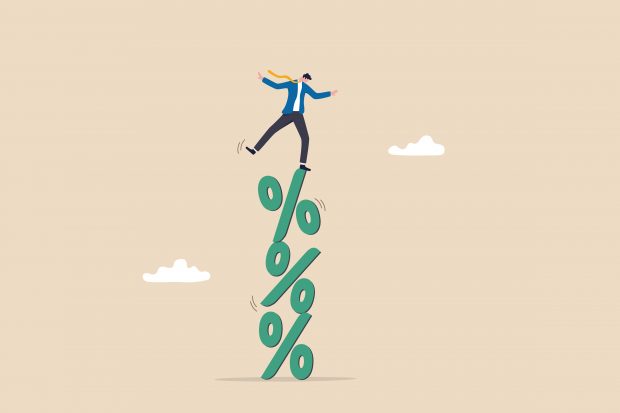 Source: Adobe Stock.
Source: Adobe Stock.
Inflation slowed in March, but credit union economists differed Wednesday on whether it might sway the Fed to pause rate hikes.
Moreover, the report did not reflect softening of mortgage rates and new car prices tracked by other trade groups.
Recommended For You
On Wednesday, the U.S. Bureau of Labor Statistics (BLS) reported that prices excluding food and energy rose 0.4% in March, after rising 0.5% in February. Prices rising in March included shelter and new vehicles, while prices fell for used cars and trucks.
CUNA Senior Economist Dawit Kebede noted that prices for all goods and services rose by just by 0.1% from February to March. The 12-month inflation rate was 5%, down from 6% in February and the lowest reading since May 2021.
 Dawit Kebede
Dawit Kebede "Overall, this is encouraging news for the Federal Reserve fighting to bring inflation down to 2% target," Kebede said. "Tight credit conditions after bank failures and high interest rates are expected to slow down spending and result in further cooling down of prices in the coming months."
The Fed has raised the federal funds rates from near zero at the start of 2022 to 4.75% to 5% through a series of rate hikes, including a 25 basis point increase when its last meeting ended March 22. Fed Chair Jerome Powell said then that further increases might be lessened to the extent recent bank failures caused a tightening of credit and a slowing of the economy.
Powell said the Fed remained determined to cool inflation to its 2% target. A key measure it watches is the index for prices that exclude the volatile food and energy prices.
NAFCU Economist Noah Yosif said the inflation report provides few clues about how much, if any, the Federal Open Market Committee will raise rates when its next meeting ends May 3.
 Noah Yosif
Noah Yosif "Hawks will focus on the supercore segment and still-solid job growth, while those members who favor a pause in rate hikes will cite slowing momentum in price and wage growth and continuing uncertainty regarding the impact of recent bank failures on credit supply," Yosif said.
The 12-month inflation rate was 6.1% for new cars and light trucks, the largest since rising 7.2% in November 2022. Used car prices fell 11.2% over the past 12 months, which was the greatest drop since falling 8.8% in December.
From February to March, seasonally adjusted prices rose 0.6% for new cars and fell 0.2% for used cars.
The BLS data differs from data Cox Automotive gathers from dealers through its Dealertrack system.
Cox Automotive reported April 7 that prices were weakening for new cars and strengthening for used vehicles.
On Tuesday, Cox Automotive reported that the average transaction price for a new car in March fell below the manufacturer's suggested retail price for the first time in 20 months. Albeit, the average transaction price last month was $48,008, about what one CU Times reporter paid for his first house in 1989.
Cox Automotive reported the average transaction price for a new car was still 3.8% higher than a year earlier, but was down 1.1% from February. Another sign of price softening is manufacturers' spending on incentives. They all but disappeared during the pandemic-induced shortages, but rose to $1,516 in March – the highest level in a year and representing 3.2% of the ATP.
Rebecca Rydzewski, Cox Automotive's research manager of economic and industry insights, said dealers don't have the pricing power they did six months ago.
 Rebecca Rydzewski
Rebecca Rydzewski "Incentives and inventory tend to move in tandem – when one moves up, so does the other," Rydzewski said. "Right now, in-market consumers are finding more inventory, more choice and dealers more willing to deal, at least with some brands. Yet, even as deals improve, unfortunately, auto loan rates remain very high, ultimately making new-vehicle affordability an issue for many households."
Implications for the mortgage market included the BLS report that owners' equivalent of rent rose 8.1% over the previous 12 months, the largest increase ever. But from February to March prices rose 0.5%, the smallest monthly rise since April 2022.
"The index for housing, a lagging indicator, still continues to contribute the most to the monthly increase but its growth slowed in March. It is expected to slow down even further in the coming months," Kebede said.
The Mortgage Bankers Association on Wednesday reported that mortgage applications for the week ending April 7 were 5.3% higher than the previous week after seasonal adjustments. The MBA's Market Composite Index showed refinances rose 0.1% and purchases rose 8%. Both measures remained down significantly from a year ago.
MBA Chief Economist Mike Fratantoni said last week's BLS report of a slowing job market in March contributed to the 30-year fixed rate decreasing to 6.30% – the lowest level in two months.
 Mike Fratantoni
Mike Fratantoni "Prospective homebuyers this year have been quite sensitive to any drop in mortgage rates, and that played out last week with purchase applications increasing by 8%," Fratantoni said.
"Refinance application volume was a mixed bag with total volume essentially flat," he said. "The level of refinance activity remains almost 60% below last year, as most homeowners are currently locked in at much lower rates."
© Touchpoint Markets, All Rights Reserved. Request academic re-use from www.copyright.com. All other uses, submit a request to [email protected]. For more inforrmation visit Asset & Logo Licensing.







